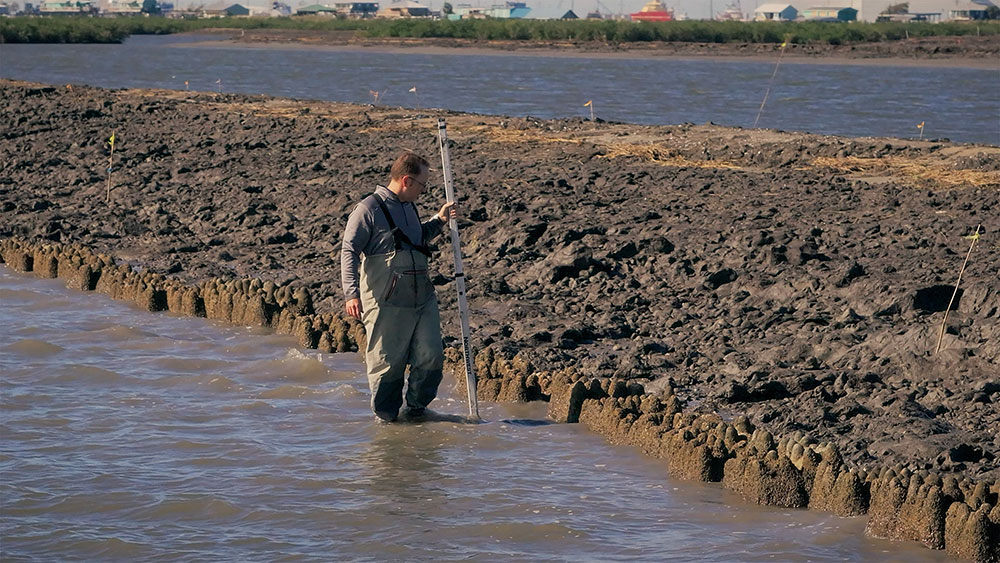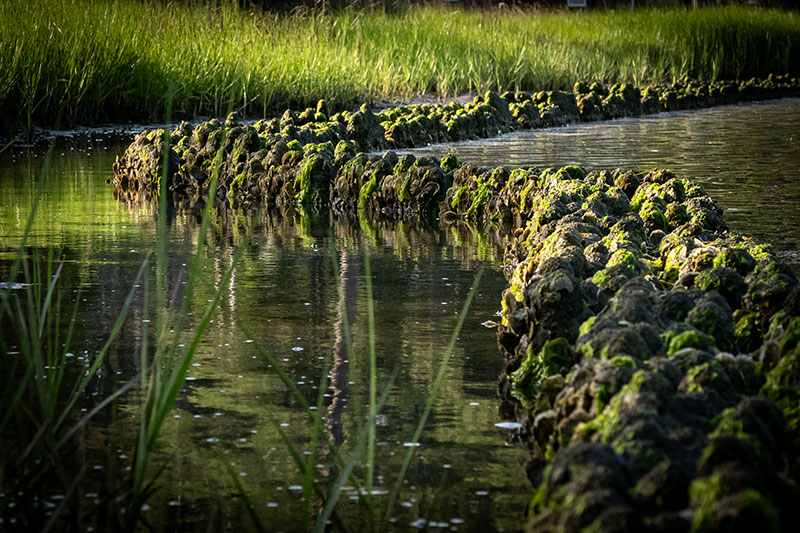Protecting the Coast: LSU BAE Alumni Design ExoForm to Help Build Reefs
May 12, 2025

Coral reefs face many threats these days and are dying at an alarming rate. Scientists predict that up to 90% of coral reefs could vanish by 2050, and up to half of the world’s coral reefs have already been lost or severely damaged. Wanting to protect coastlines and promote the growth of coral reefs and marine life, two LSU Engineering alumni created a company called Natrx whose mission is to use sustainable technologies for resilience challenges.
“What’s damaging coral reefs are overfishing, runoff, sediment loading, and anything that degrades water quality,” Natrx co-founder Tyler Ortego said. “The oceans are warming as well, which is having its own impact.”
Ortego is a cofounder of Natrx, a company he and fellow LSU Biological Engineering alumnus Matt Campbell founded to build on the success of a business they had created in 2005 after Campbell did a project for LSU on the subject of coastal restoration.
“This business started off as Matt’s senior design project and then his masters project,” Ortego said. “We ended up getting some patents for structures and a material used to grow oyster reefs into breakwaters. Many years later, we were trying to make our business better and more customizable for the different habitats, and we stumbled upon a totally new way of forming concrete.
Ortego and Campbell designed their own reef material through DryForming, a process that creates durable, customizable reef modules that oysters, corals and other organisms can attach to, preserving wildlife and its habitat.
“If you’re in an estuary, oysters will expand the shape and size of the reef once they attach to it,” Ortego said. “If we get oyster growth, the reefs can actually grow vertically faster than sea level rise.”
“Oysters are phenomenal at stopping erosion,” Campbell said.
DryForming uses dry concrete mix that is then robotically injected with a precise volume of water at each node location to create diffusion balls that harden. Wherever the balls overlap is the shape of the structure, giving it a bulbous, natural look. The location and volume of the water injection is controlled by the 3D design file for that shape. The process takes 30 minutes to an hour for one 3,500-lb. box and allows Natrx to produce any shape they want to mimic a specific environment.
“If you have big waves and currents, you need weight,” Ortego said. “If you have soft soils, you need less weight. Different organisms need different voids or surface features.”
 Natrx calls the DryFormed pieces “ExoForms,” colorfully named “Cajun Coral” by their
collaborators down the bayou. Each ExoForm is just under 3 feet in each dimension
and can be laid out into linear structures, such as their largest order to date for
Ducks Unlimited where they printed 3,333 pieces equating to almost two miles along
the shoreline.
Natrx calls the DryFormed pieces “ExoForms,” colorfully named “Cajun Coral” by their
collaborators down the bayou. Each ExoForm is just under 3 feet in each dimension
and can be laid out into linear structures, such as their largest order to date for
Ducks Unlimited where they printed 3,333 pieces equating to almost two miles along
the shoreline.
Natrx’s first installation was done in Golden Meadow, La., in 2020, and was followed by other state projects in Port Fouchon, Pointe-aux-Chene, Grand Isle, Cocodrie, and South Marsh Island. Since then, they have shipped ExoForms to Maryland, Virginia, North Carolina, Texas, Florida, Illinois, New York City, and Hawaii, where they are gearing up for a large coral reef restoration off of Waikiki Beach this summer.
“We’ll make the reefs right here in Louisiana and ship them over the ocean where they will be precisely set in their final location,” Ortego said. “We can reach anywhere in the world from our Resilience Center of Excellence in Amelia.”
Raising Cane’s founder Todd Graves has even supported four Natrx projects, including one called Hotel Sid, a popular fishing spot near an oil rig.
Through Natrx, Ortego and Campbell have also made a connection with another company run by LSU Engineering alumni—Danos. When they first started Natrx, Ortego and Campbell went through a program called Energy X, which had partnered with Shell and was sourcing coastal construction or nature-based resilience. Natrx’s contact at Shell said they loved what Natrx was doing and wanted them to partner with their number one service provider.
“Now we have a formal partnership with Danos, and it gets better every day,” Ortego said.
For Ortego, who grew up exploring the outdoors of St. Landry Parish, Natrx’s mission is personal.
“I grew up going to Rockefeller Wildlife Refuge (in Cameron and Vermillion parishes),” he said. “That was our spot where you had water-control structures where you could catch crabs, throw a cast net for shrimp, and catch fish all in the same place. The refuge is disappearing at an incredible rate. We’re working on some engineering for the refuge and already have some prototypes in the inner canal that are growing oysters that maintain the banks.”
Natrx states that their goal is to become the default way people think about coastal resilience and habitat restoration.
“We want to protect miles of shoreline and grow billions of oysters and corals, and have robust economies,” Ortego said. “You’re protecting fisheries, recreation and tourism for coastal communities. Our technologies are providing solutions that allow people to live in harmony with nature.”
For more information on Natrx, visit https://natrx.io/natrx-recognized-as-a-leading-louisiana-business-by-led.
*ExoForm, DryForming and derivatives are trademarks of Natrx, Inc.